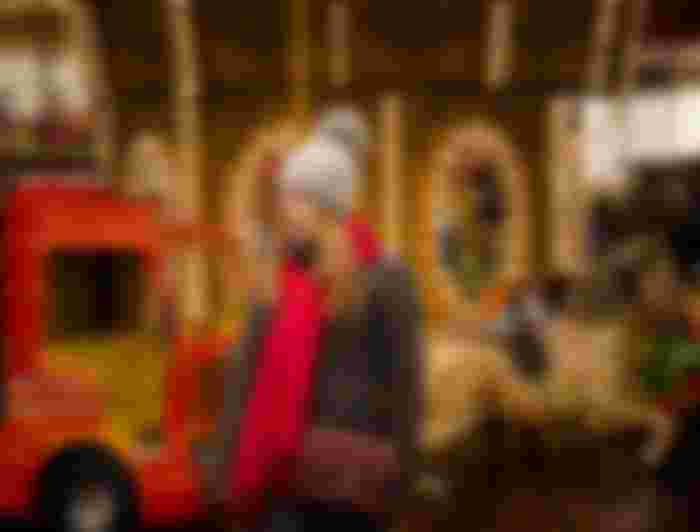
Missing this year: what region fairs educate about science, business, and civics.
This week, without precedent for a very long time, it's not Fair Week in Carroll County, Ohio.
Any individual who thinks about training ought to be concerned.
Province fairs—and the enormous associations they speak to—are essential to youth learning. The learning lost for the current year more likely than not been gigantic.
To the easygoing reasonable goer, it may not exactly appear in this way, on your rushed encounter with your nine-and seven-year-olds, as you get them in the door, on to barely enough rides, taken care of with steak-on-a-stick and cotton sweets, and deliberately explored past the jubilee games and their sellers, all while spending something under a hundred dollars but then not showing up totally penurious.
In any case, look initial, seventy miles east of here, at a focal point of the AI, driverless vehicle, AI, and mechanical technology future. Take a gander at the acts of a college—Carnegie Mellon, in Pittsburgh—that scans the whole world for promising youth. At one of a great many stories demonstrating the job province fairs play in youth advancement.
At the point when Raj Reddy, overseer of Carnegie Mellon's Robotics Institute, offered me a school temporary position, it was unquestionably not for my scholastics. He required the experience I'd picked up making anticipates for the Junior Fair rivalry. His mechanical arm examination would help change Ford and GM's sequential construction systems. To test it, he required the experience I'd picked up—and the language I'd learned—as an individual from 4-H.
Region junior fairs are summative occasions of a time of learning for a few youth programs, including 4-H, Scouts and FFA—the high schooler rural sciences association whose initials represent Future Farmers of America yet that presently invites those destined for different professions. FFA's 8600 school-based sections serve 700,000 secondary school understudies. FFA educators are commonly authorized region or professional instructors. Frequently, FFA is the fundamental way for "shop" and other professional learning in standard region schools.
4-H today furnishes in excess of 6 million youth with educational program based learning, mentorship, little gathering peer cooperation, experience-based undertakings, and involved civics practice.
More than one out of five U.S. youngsters have been essential for 4-H sooner or later. An all year program, 4-H's undertaking segments see the most action when school lets out for summer. The area reasonable cutoff time pushes children to finish their undertakings.
Where their folks may have done home-wiring circuits, model planes, and bread-production, the present teenagers may incline toward coding, rockets, natural examination, yogurt dishes, and feta cheddar plunge ventures. In excess of 5,000,000 of the activities finished every year are science-based.
4-H clubs are typically run by guardians. In excess of 500,000 volunteers make the program work. As an association, 4-H is gone through the country's property award colleges and their helpful expansion administrations, which are offices of the U.S. Branch of Agriculture. Nearby 4-H province facilitators since quite a while ago held the situation of educator at a land award college. In view of this structure, 4-H says it is dynamic in each district (or area) in the U.S.
4-H was "customized learning" and an "associated learning environment" a hundred years before those terms got cool.
Instruction experts ought not question the scholarly idea of 4-H learning. The previous decade has regardless of anything else indicated us the significance of foundation information in all school learning.
The 4-H and other reasonable arranged projects assemble jargon and create language in manners that can show youth the way to profitable vocations, giving them focal points over different understudies or occupation candidates who don't have a clue about the specific wording.
Similarly as formal secondary school classes do, 4-H's deliberately checked educational programs fabricates language in adolescents. Youth can browse more than 350 educational program objects in eight fundamental fields: Business and Citizenship, Creative Arts, Environment and Outdoor Science, Food and Healthy Living, Practical Living, Professional Development, STEM, and obviously, Animal and Agricultural Science.
Entomology, tutor preparing, theater expressions, profession availability, carpentry, water protection, and veterinary science are a couple of explicit year-long tasks.
The 4-H language improvement curve took me, path in 1985, to critical work with the main designer at the Defense Advance Research Project Agency. Comparable learning will support the present youth to a wealth of chances and worldwide and nearby commitments.
Teenagers learn business, as affirmed by various nearby news stories this year bemoaning the considerable loss of youth salary from market creatures and different undertakings (a pie may increase an adolescent $500; a cow a few thousand), ordinarily unloaded at province and state fairs.
Indeed, even history is all around spoke to in 4-H. As youngsters become increasingly more far off from the fundamentals that continue us, 4-H requests that adolescent read about those nuts and bolts, however to straightforwardly connect with them. Agribusiness—raising food—is the conspicuous case, however think about this: One of the extraordinary scholarly accomplishments of history was Nikola Tesla's presentation of the AC engine. Winding an engine loop and learning its language was one of numerous 4-H electric tasks.
4-H has additionally imparted civics learning for ages. The civics and companion organizing parts are not only crucial to the 4-H instructive mission; they are woven into its structure.
At month to month 4-H gatherings, the language of parliamentary system is aced at a youthful age. Robert's standards of request and terms like "movement", "second", and "lay on the table" are largely recognizable ground to any seventh grader who's been in 4-H. When as a grown-up, I served on a province leading body of chiefs, the language of "how to direct open gatherings" was at that point an imbued in-youth non-issue.
Propensities for network association, as well, come ahead of schedule to 4-H'ers. As youthful as eight they discover that old graveyards, stops, the province carnival, food conveyance locales, and memorable structures may all require care by resident volunteers. Visits to nursing homes, extraordinary requirements youth offices, and grown-up homes for the formatively debilitated are essential for the learning.
For adolescents, curricular choices incorporate unequivocal investigation of administrators of initiative. More established youth take administration positions at the area level.
What's more, at each gathering, individuals most youthful to most seasoned present the 4-H (head, heart, hands, wellbeing) vow:
I vow my head to more clear reasoning,
my heart to more noteworthy steadfastness,
my hands to bigger help,
furthermore, my wellbeing to better living,
for my club, my locale,
my nation, and my reality.
On the off chance that area fairs return one year from now, as I trust they will, they'll by and by embody the fate of instruction.
